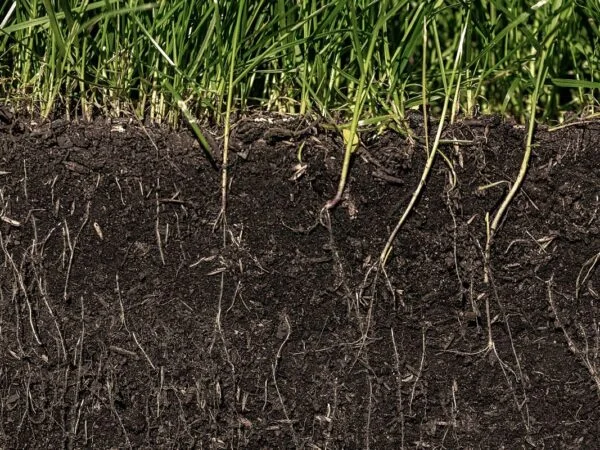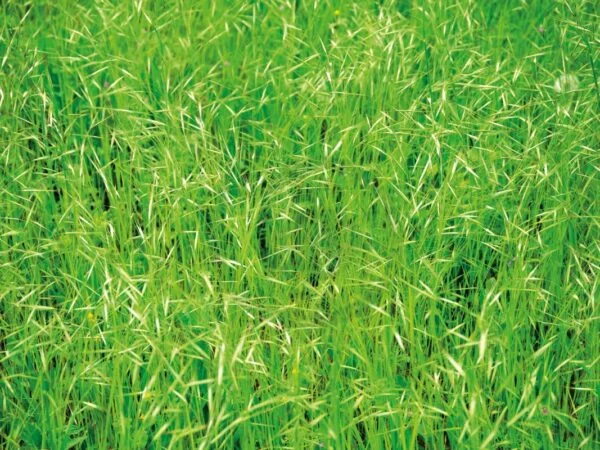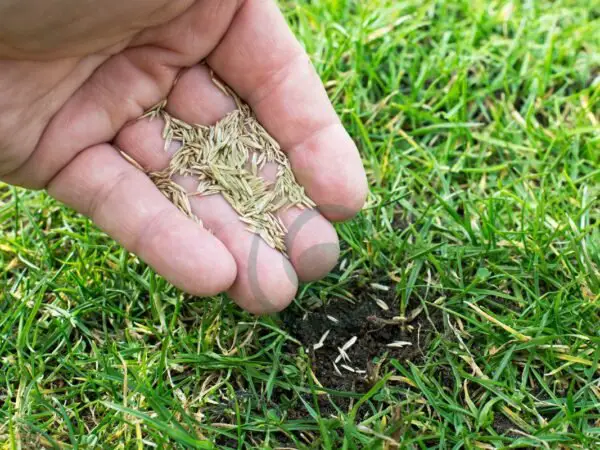Looking to transform your existing lawn? The best way to plant grass seed on an established lawn can revitalize your outdoor space. Say goodbye to patchy, lackluster grass and hello to a lush, vibrant lawn that will be the envy of the neighborhood. By following some simple steps, you can achieve a thick carpet of green that enhances your curb appeal.
Whether you're dealing with bare spots or simply want to improve the overall health and appearance of your grass, planting new seeds is the answer. It's time to bid farewell to thinning turf and welcome in a fresh start for your lawn with season grasses and grass seeds. Discover how easy it is to rejuvenate your yard with these effective techniques.
Key Takeaways
- Overseeding can rejuvenate your lawn: By adding new grass seed to your existing lawn, you can fill in bare patches and promote a lush, healthy lawn.
- Plant grass seed in the fall for optimal results: The cooler temperatures and increased moisture in the fall create ideal conditions for grass seed germination and establishment.
- Proper preparation is key: Ensure your lawn is properly mowed, dethatched, and aerated before planting grass seed to maximize seed-to-soil contact.
- Select the right grass seed for your lawn: Consider factors like sunlight exposure, soil type, and foot traffic to choose a grass seed variety that will thrive in your specific conditions.
- Follow a systematic planting process: Whether using a broadcast spreader or overseeding by hand, evenly distribute the grass seed over your lawn to achieve uniform coverage.
- Fertilize after planting to support growth: Applying a starter fertilizer rich in phosphorus can provide essential nutrients for new grass seedlings to establish quickly and healthily.
- Consistent watering is crucial: Keep the soil consistently moist but not waterlogged to support germination and early growth of the new grass seed.
- Maintain a regular lawn care routine: Mowing at the correct height, watering deeply but infrequently, and addressing weeds promptly are essential for a thriving lawn.
- Prepare your lawn seasonally: Adjust your lawn care practices throughout the year to cater to changing weather conditions and ensure the long-term health of your grass.
Benefits of Overseeding
Lawn Revitalization
Identify areas needing overseeding to promote thicker, healthier grass growth across your lawn. Prepare by mowing short and clearing debris for optimal seed-to-soil contact. Choose suitable grass seed varieties tailored to your lawn's specific requirements.
Seasonal Adaptation
Understand the ideal time for overseeding based on your region's climate conditions. Consider blending warm-season grasses with cool-season types for year-round green coverage. Adhere to precise timing recommendations for successful overseeding outcomes.
Aesthetic Improvement
Attain a luxurious, lush lawn by implementing overseeding techniques in sparse areas. Elevate your lawn's visual appeal with premium quality grass seed selections. Proactively use overseeding as a preventive measure to sustain a beautiful and healthy lawn.
Best Season for Planting
Optimal Growth Timing
To achieve the best results when overseeding, time your task strategically for maximum growth potential. Choose the season wisely to ensure proper seed germination and successful establishment of new grass. Planning ahead is crucial to capitalize on the active growth periods of grass for optimal outcomes.
Weather Considerations
When planning overseeding tasks, it's essential to consider weather patterns for successful results. Monitor temperature changes closely as they play a significant role in determining the ideal time for overseeding. Make necessary adjustments to your overseeding plans based on seasonal weather conditions to ensure favorable outcomes.
Preparing Your Lawn
Area Readiness
When preparing your lawn for overseeding, start by clearing debris such as thatch and clippings to ensure optimal seed-to-soil contact. Use a metal thatch rake for effective debris removal, allowing sunlight to reach the soil.
To further improve the soil's condition, loosen compacted soil before overseeding. Aerating the soil helps enhance air circulation, moisture absorption, and seed penetration. This step promotes better root growth and overall grass development.
Problem Correction
Before planting grass seed on an existing lawn, it is crucial to balance the soil's pH levels. Test the soil to determine its acidity or alkalinity and make necessary adjustments for healthy grass growth. Achieving optimal pH levels provides a conducive environment for successful overseeding.
Inspect your lawn for any signs of diseases prior to overseeding to effectively manage potential issues. Address existing lawn diseases through appropriate treatments before proceeding with overseeding activities. By taking preventive measures, you can avoid disease spread during the oversowing process.
Choosing Grass Seed
Seed Quality
Select high-quality grass seed that suits your region's climate for a thriving lawn. Opt for premium products to ensure resilient and healthy grass growth. Choose varieties tailored to meet your lawn's specific requirements.
Climate Suitability
Consider the local climate when choosing grass seed for overseeding. Opt for species that can flourish in your region's environmental conditions. Ensure selecting grass seed suitable for the climate to enhance overseeding success.
Growth Rate
Understand different grass species' growth rates before overseeding. Pick varieties with compatible growth rates for even coverage results. Plan overseeding according to each species' growth characteristics to achieve optimal lawn coverage.
Planting Process
Spreading Technique
Proper spreading techniques are crucial for even distribution of seeds across the existing lawn. Utilize lawn spreaders suitable for the area size to ensure consistent coverage. Carefully apply seeds to achieve uniformity throughout the lawn.
Seed-to-Soil Contact
To enhance germination, prepare the area adequately before seeding to promote good seed-to-soil contact. Direct contact between seeds and soil is essential for successful growth. Creating favorable conditions for root development improves seed establishment.
Overseeding Tips
For successful overseeding, adhere to expert tips and guidelines. Mow short and water consistently after overseeding as part of best practices. Incorporate proven strategies into your routine to achieve optimal results.
Post-Planting Fertilization
Nutrient Requirements
After overseeding, provide essential nutrients through fertilization to support new grass growth and establishment. Starter fertilizers rich in phosphorus and nitrogen can promote healthy growth.
Maintain a nutrient balance in newly seeded areas to ensure the grass receives adequate nourishment for healthy establishment. By providing the necessary nutrients, you can help the grass thrive and develop strong roots.
Fertilizer Selection
When selecting fertilizers for post-overseeding, it's crucial to choose products that do not contain pre-emergent herbicides. Opt for starter fertilizers specifically formulated to nurture new grass growth effectively.
Consider any local restrictions on fertilizer use before applying them to your lawn. If unsure about which fertilizer to choose or how to apply it correctly, don't hesitate to consult with gardening experts for guidance.
Watering Your Lawn
Irrigation Schedule
Establish a watering schedule post-overseeding to keep soil moist. Homeowners should water lightly multiple times a day to prevent the soil from drying out.
Water newly seeded areas frequently initially, then adjust watering frequency based on weather conditions. Consistency in watering is crucial for successful seed germination.
Monitor soil moisture levels regularly and adjust irrigation as needed. Overwatering can lead to issues like mold growth, while underwatering can hinder seed germination.
Moisture Maintenance
Ensure consistent moisture levels in newly seeded areas by watering deeply but infrequently. This encourages deep root growth for stronger grass plants.
Water appropriately based on seedling requirements; young grass seeds are delicate and need gentle watering to avoid displacement or damage.
Prevent wilting by maintaining adequate moisture throughout the germination period. Dry patches could lead to stunted growth and patchy lawn coverage.
Lawn Maintenance Routine
Mowing Practices
After overseeding, adopt proper mowing techniques to promote new grass growth effectively. Ensure to adjust mower height based on the seeding depth for optimal results. By regularly mowing at recommended heights, you encourage healthier and denser grass growth.
Thatching and Aeration
To maintain a lush lawn, address thatch buildup issues either before or after overseeding. Enhance soil quality by employing core aeration methods to improve soil aeration levels. Incorporating dethatching and aeration into your maintenance routine will significantly boost overall lawn health.
Seasonal Lawn Preparation
Winterizing Southern Lawns
Southern lawns require special attention to prepare for the winter season. Prepare your lawn for the colder months by timely fall overseeding. Choose cool-season ryegrass varieties that can thrive during winter, enhancing the overall aesthetics of your lawn. Overseed your southern lawn in late fall when temperatures consistently drop below 65°F.
Summer Stress Management
Managing summer stress on your lawn is crucial for maintaining its health and appearance. Implement proactive maintenance measures to combat the effects of hot weather conditions. Establish watering schedules during the summer months to ensure that your grass receives adequate moisture. Monitor and oversee all summer lawn care practices to enhance resilience against heat stress situations.
Final Remarks
By following the steps outlined in this guide, you now possess the knowledge needed to successfully plant grass seed on your existing lawn. Overseeding not only enhances the aesthetic appeal of your lawn but also contributes to its overall health and resilience. Remember, the key lies in proper preparation, selection of suitable grass seed, and consistent maintenance practices. Your efforts will be rewarded with a lush and vibrant lawn that you can enjoy year-round.
Take action now and implement these strategies to transform your lawn into a green oasis. Your commitment to nurturing your grass will result in a beautiful outdoor space that you can take pride in. Keep up with the maintenance routine and seasonal preparations to ensure your lawn remains healthy and thriving. Your dedication will yield a lush carpet of grass that enhances the beauty of your property.
Frequently Asked Questions
How does overseeding benefit an existing lawn?
Overseeding helps fill in bare patches, improve grass density, enhance color, and boost overall lawn health. It also helps to choke out weeds and prevent soil erosion.
When is the best season for planting grass seed on an existing lawn?
The best time to plant grass seed on an existing lawn is during the early fall or spring when temperatures are moderate, allowing for optimal germination and establishment of the new grass.
What is involved in preparing a lawn for planting grass seed?
Preparing your lawn involves mowing it short, dethatching if needed, aerating to improve soil compaction, and ensuring proper soil pH levels. This creates an ideal environment for new grass seed to take root and grow successfully.
How do I choose the right type of grass seed for overseeding my lawn?
Consider factors like your region's climate, sunlight exposure in your yard, traffic levels on the lawn, and desired aesthetic qualities. Choose a high-quality blend that matches these criteria for best results.
What is the post-planting fertilization process after seeding a lawn?
After planting grass seed on your existing lawn, apply a starter fertilizer rich in phosphorus to promote root development. Follow manufacturer instructions carefully and water thoroughly after application to support healthy growth.
Image Source: Paid image from CANVA




